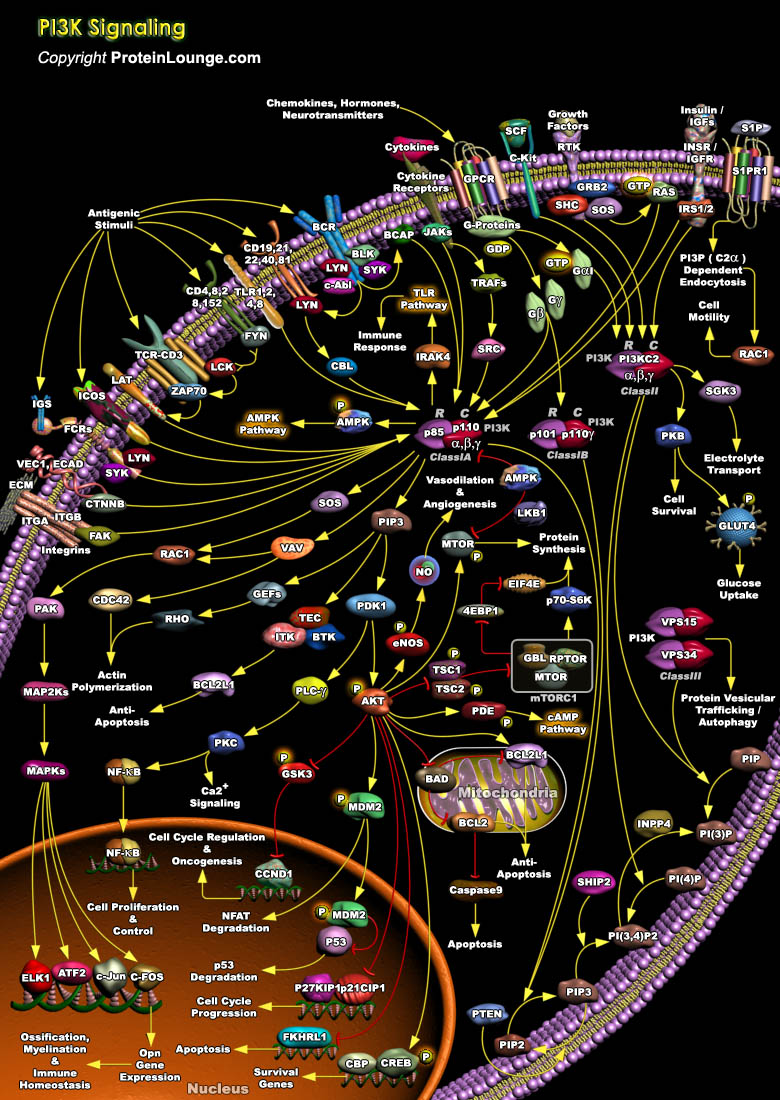
The (Phosphatidylinositde-3-Kinase) family of enzymes regulate diverse biological functions in every cell type by generating lipid second messengers that ultimately results in the mediation of cellular activities such as proliferation, differentiation, chemotaxis, survival, trafficking and Glucose homeostasis. On the basis of structural similarities, the members are sub-divided into three classes; Class I, II and III. The Class I and II PI3Ks are found only in metazoa, whereas, Class III PI3Ks are also found in unicellular eukaryotes. The Class I PI3Ks are sub-divided into two groups-the Class IA and Class IB PI3Ks. Class IA PI3Ks are heterodimeric enzymes consisting of regulatory subunits (p85-Alpha, p85-Beta or p55-Gamma) and a catalytic subunit (p110-Alpha, or[..]
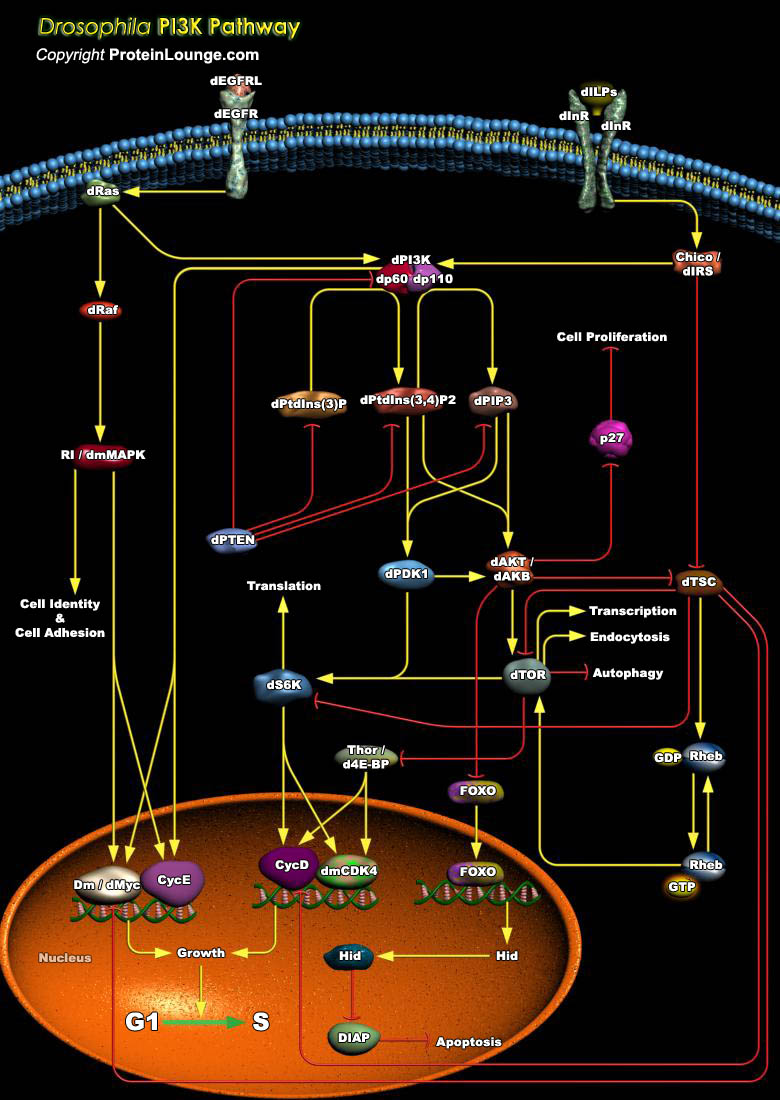
The PI3K (Phosphatidylinositde-3 Kinase) family of enzymes is recruited upon growth factor receptor activation and produces 3' phosphoinositide lipids. The lipid products of PI3K act as second messengers by binding to and activating diverse cellular target proteins. Therefore, PI3Ks play a central role in many cellular functions. In mammals, the PI3Ks have a p110 catalytic subunit associated with a p85, p55 or p50 regulatory subunit (Ref.1). In Drosophila, the dPI3K (Phosphatidylinositde-3 Kinase) regulatory subunit dp60 (p60 Regulatory Subunit of PI3K) lacks the SH3 and BH (Bcr homology) domains like that of the mammals showing that these additional domains have been added during evolution to confer additional functions or modes of regulation to the PI3K[..]

One of the key functions of catabolic metabolism is to maintain high levels of ATP (Adenosine Triphosphate) and cells rapidly respond to any stress that threatens to lower ATP levels by arresting non-essential ATP-utilizing functions and stimulating available ATP-generating pathways. A central player in this system is the AMPK (AMP (Adenosine 5'-Monophosphate)-Activated Protein Kinase). AMPK is a master metabolic regulator responsible for modulating cellular responses to an energy challenge. The evolutionarily conserved Serine/Threonine Kinase, AMPK acts as a “Fuel Gauge” or “Cellular Energy Sensor” and inhibits key enzymes of ATP-consuming pathways and induces pathways that generate ATP. When AMPK is activated by stimuli like muscle contraction, inflammation,[..]
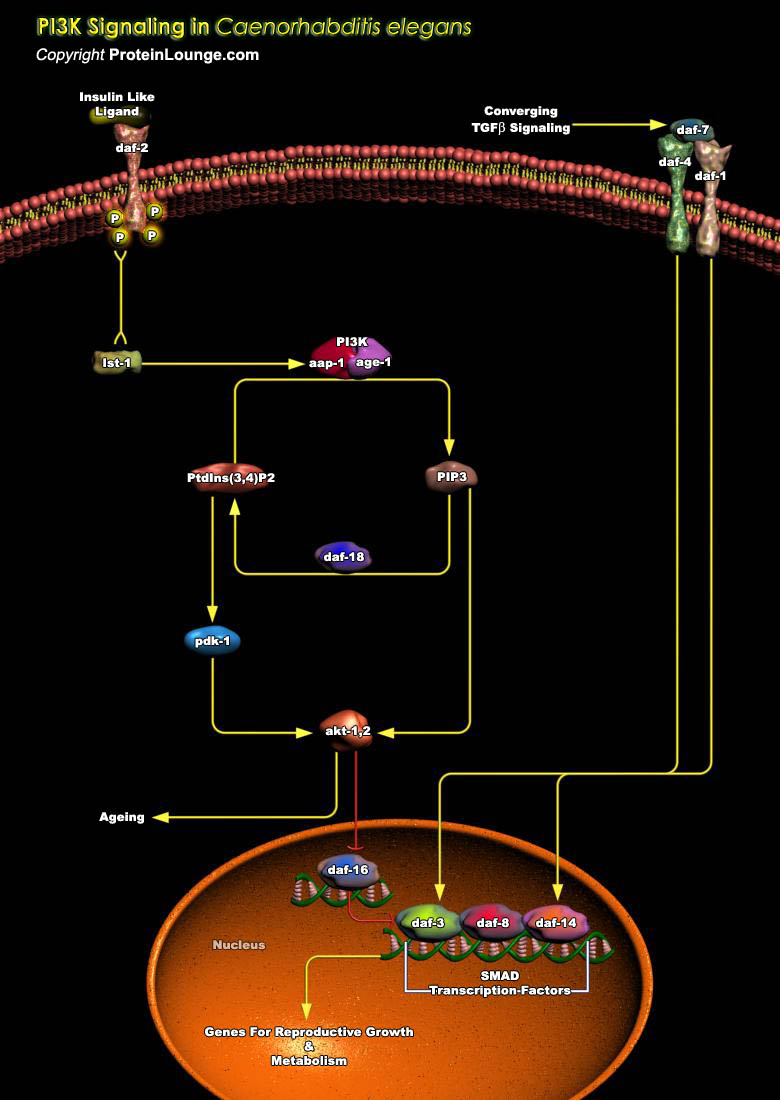
PI3Ks (Phosphoinositide 3-Kinases) are an important type of lipid kinase that form a large evolutionarily conserved family of enzymes that specifically phosphorylate inositol phospholipids at the D-3 position of the inositol ring. The C. elegans (Caenorhabditis elegans) PI3K is required for functional membrane trafficking machinery (Ref.1). C. elegans PI3K adaptor subunit aap-1 (Phosphoinositide 3-Kinase age-1 Adapter Subunit-58.5 KD) shares moderate sequence similarity with the p50/p55 adaptor subunits of their vertebrate and Drosophila counterparts. C. elegans PI3K also contains age-1 (Ageing Alteration-age-1), a homolog of vertebrate p110 catalytic subunits of PI3K (Ref.2). An insulin receptor-like signaling pathway regulates C. elegans metabolism,[..]

Cardiac hypertrophy describes an abnormal condition where the heart becomes enlarged. Several factors, such as increased mechanical loading and neuro-hormonal chemicals can induce hypertrophy. ET1 (Endothelin-1) is a 21-amino acid vasoconstrictor peptide, which is able to induce cardiac hypertrophy. In mammals this peptide family also includes ET2 and ET3. ET1 is the principal isoform in the human cardiovascular system and remains the most ubiquitous, potent, and unusually long-lasting constrictor of human vessels discovered. Biosynthesis of ET1 is primarily regulated by autocrine mechanisms, physico-chemical factors, including mechanical forces, changes in oxygen tension, changes in pH, Angiotensin-II, Vasopressin, Norepinephrine, growth factors, cytokines,[..]
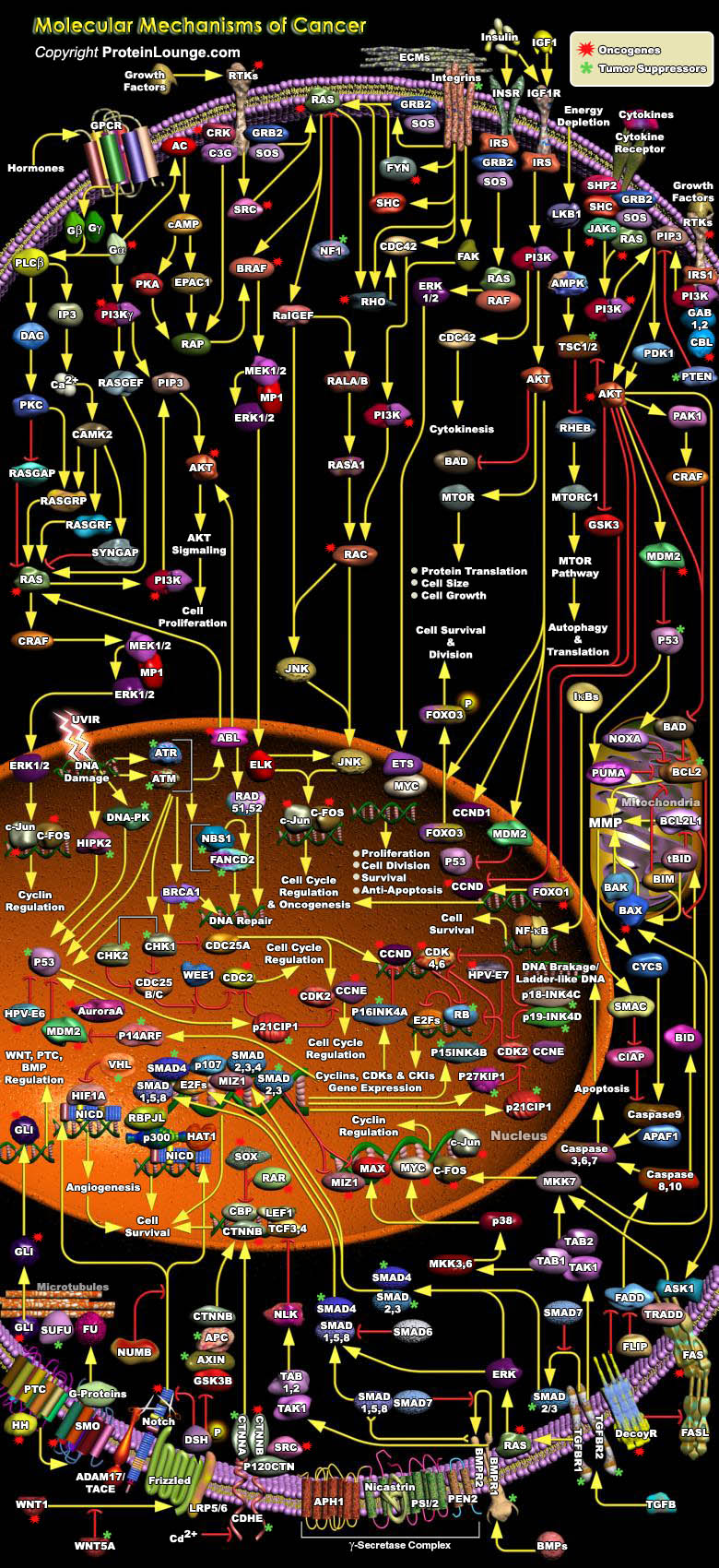
Cancer cell genotypes are a manifestation of six essential alterations in cell physiology that collectively dictate malignant growth; self-sufficiency in growth signals, insensitivity to growth-inhibitory (anti-growth) signals, evasion of programmed cell death (apoptosis), limitless replicative potential, sustained angiogenesis and tissue invasion and metastasis. Environmental and endogenous DNA-damaging agents and genetic instability drive tumor progression by generating mutations in two types of genes, oncogenes and tumor suppressor genes, providing cancer cells with selective growth advantage and thereby leading to the clonal outgrowth of a tumor. In general, oncogenes (called proto-oncogenes in their normal, non-mutated form) promote cell proliferation and[..]
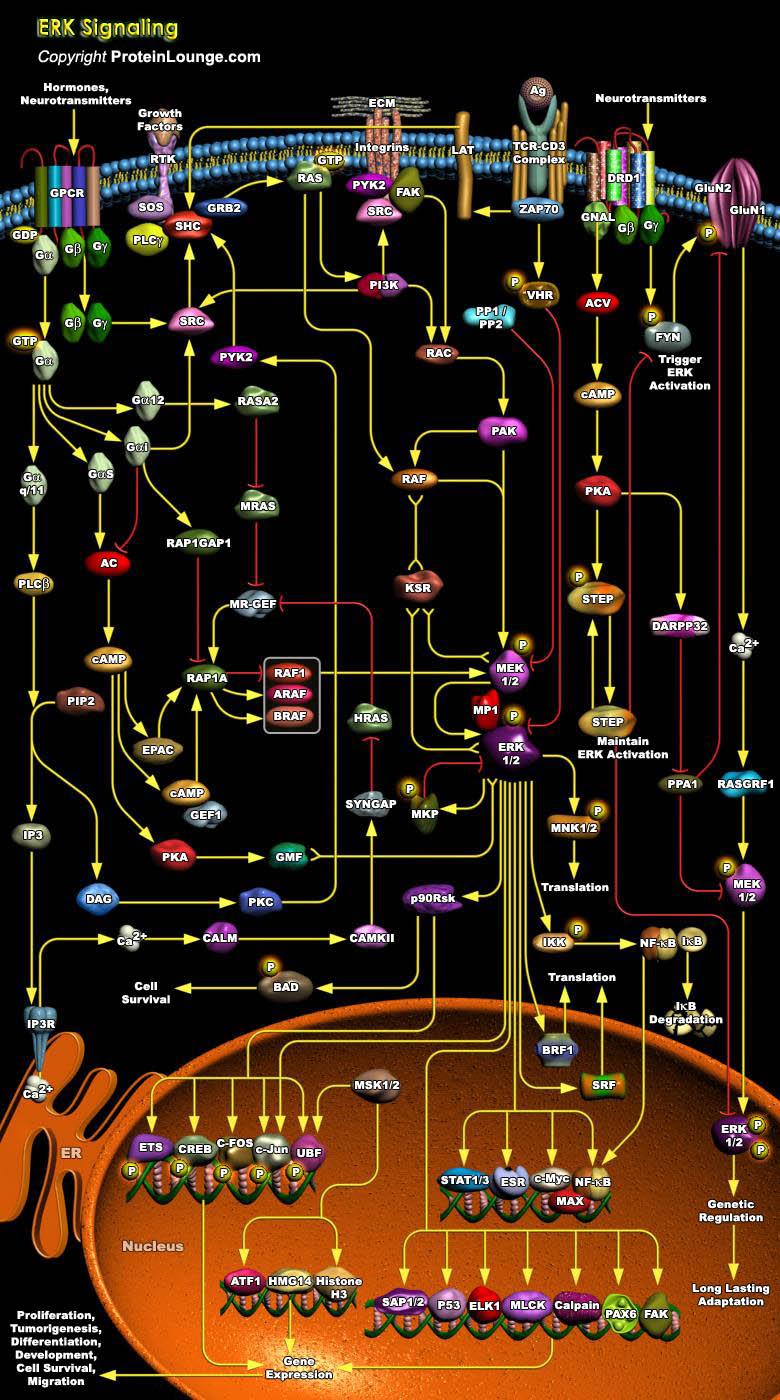
The MAPK (Mitogen-Activated Protein Kinase) pathway is one of the primordial signaling systems that nature has used in several permutations to accomplish an amazing variety of tasks. It exists in all eukaryotes, and controls such fundamental cellular processes as Proliferation, Differentiation, Survival and Apoptosis. Mammalian MAPK can be divided into four groups based on their structure and function: ERKs (Extracellular signal-Regulated Kinases), p38MAPKs, JNKs (c-Jun NH2-terminal Kinases) and ERK5 (Extracellular signal-Regulated Kinase-5) or BMK. Activation of these MAPKs occurs through a cascade of upstream kinases; a MAPKKK (MAPK Kinase Kinase) first phosphorylates a dual-specificity protein kinase MAPKK (MAPK Kinase), which in turn phosphorylates the MAPK. This[..]
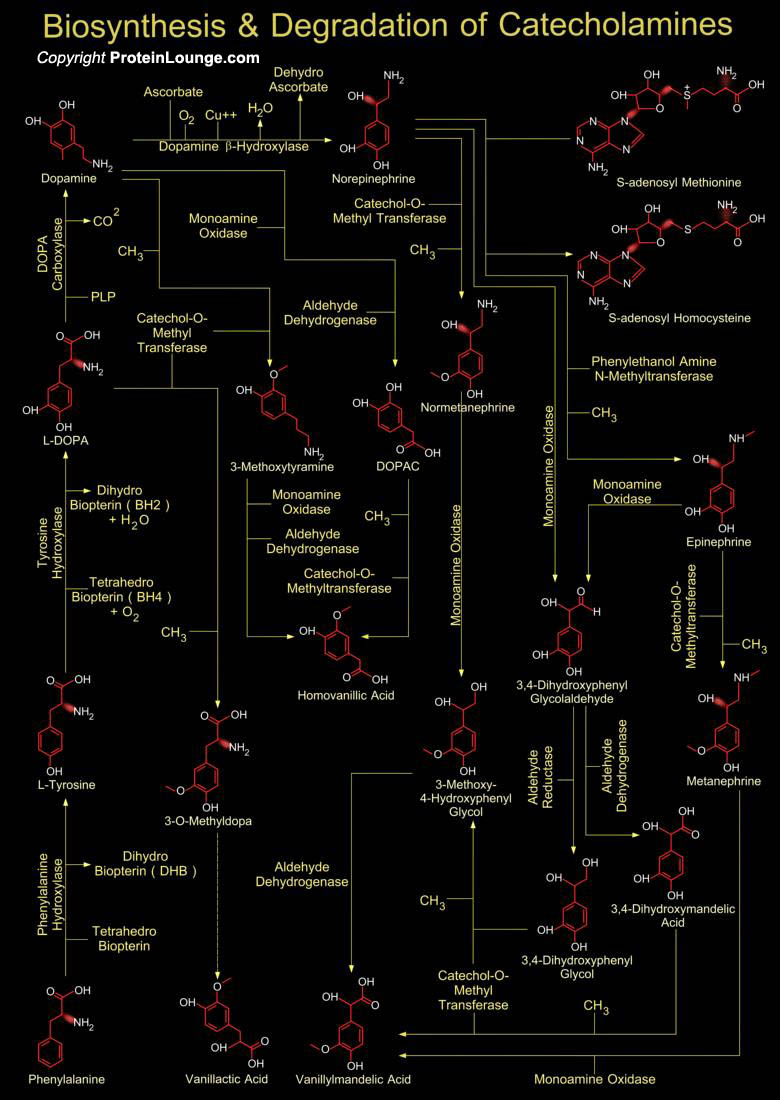
Catecholamine is the common term for the important hormones Norepinephrine (Noradrenaline), Epinephrine (Adrenaline) and Dopamine. Chromaffin cells of the adrenal medulla are the key site of catecholamine synthesis and collections of these cells are also found in heart, liver, kidney, gonads, adrenergic neurons of the postganglionic sympathetic system, and CNS (Central Nervous System). The major product of the adrenal medulla is epinephrine, which constitutes 80% of the catecholamines released from the medulla (Ref.1&2). Tyrosine initiates catecholamine biosynthesis. It is produced in the liver from phenylalanine through the action of phenylalanine hydroxylase. The tyrosine is then transported to catecholamine-secreting neurons where a series of reactions[..]
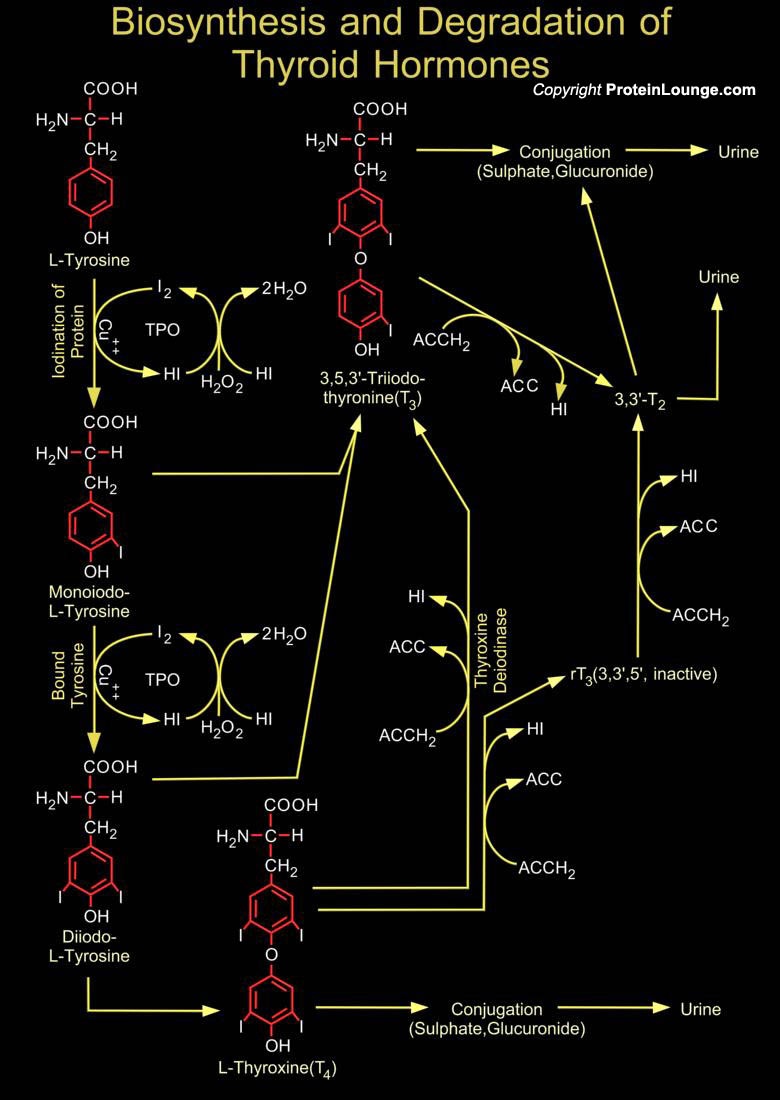
Iodide, which is ingested in food and water, is actively concentrated by the thyroid gland, converted to organic iodine by TPO (Thyroid Peroxidase also known as Iodide Peroxidase), and incorporated into tyrosine in intrafollicular thyroglobulin within the colloid at the basal cell surface of the thyroid follicular cell. The tyrosines are iodinated at one (Monoiodotyrosine) or two (Diiodotyrosine) sites and then coupled to form two active hormones, Thyroxine (T4, a Tetra-Iodinated Tyrosine derivative) and Triiodothyronine (T3). Unlike the other endocrine hormones, these are not peptides. They are derived from the amino acid tyrosine. T4 is the major active hormone. In tissues outside the thyroid, particularly in the liver and kidney, T4 is converted to T3, an active[..]
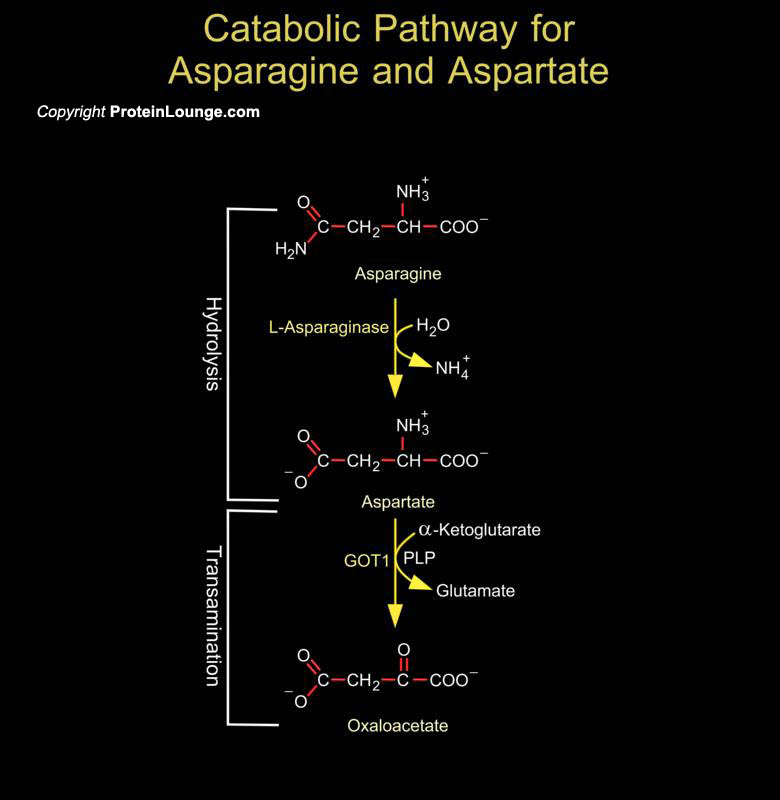
Asparagine, a non essential amino acid, synthesized form oxaloacetic acid. It is an amide of a amino acid Aspartate. The enzymes ASPG (asparaginase) and ASRGL1 (asparaginase and isoaspartyl peptidase 1) catalyze the hydrolysis of Asparagine to Aspartate and Ammonia. The enzyme GOT1 (glutamic-oxaloacetic transaminase 1) catalyzes the transamination of Aspartate to oxaloacetic acid which can subsequently enter either the TCA cycle or gluconeogenesis. ASPG play a prominent role in chemotherapy, as cancer cells are dependent on the availability of extracellular Asparagine(Ref.1 &2). Aspartate is converted to Asparagine in an ATP-dependent amidotransferase reaction a[..]

The liver is the major organ responsible for the conversion of excess dietary carbohydrate into triglycerides. Ins (Insulin) and Glucagon (a pancreatic hormone) play critical roles in homeostatsis of Glucose and triglycerides in humans as well as in R. norvegicus (Rattus norvegicus). Glucose serves as a signal independent of hormones in activation of more than 15 enzyme genes in the lipogenic pathways. However, the mechanism by which Glucose generates signal to induce these gene is not known (Ref.1). Ingestion of a high carbohydrate diet leads to the activation of several regulatory enzymes of Glycolysis and Lipogenesis, including the PKLR (Pyruvate Kinase, Liver and RBC), also known as LPK (L-Type Pyruvate Kinase). The lipogenic genes contain ChREs (Carbohydrate[..]

DNA damage checkpoints are critical for preventing tumorigenesis and regulating the response of cells to genotoxic agents. When cells are exposed to DNA damaging agents, they respond by undergoing cell cycle arrest or programmed cell death. 14-3-3 proteins play particularly important roles in coordinating progression of cells through the cell cycle, regulating their response to DNA damage, and influencing life-death decisions following internal injury or external cytokine-mediated cues (Ref.1 and 2). 14-3-3 sigma (also called stratifin or SFN), a tumor suppressor, is a member of a highly conserved family of 14-3-3 proteins that are present in all eukaryotic organisms. Its increased expression causes resistance to anticancer agents and radiation that causes DNA damages[..]

